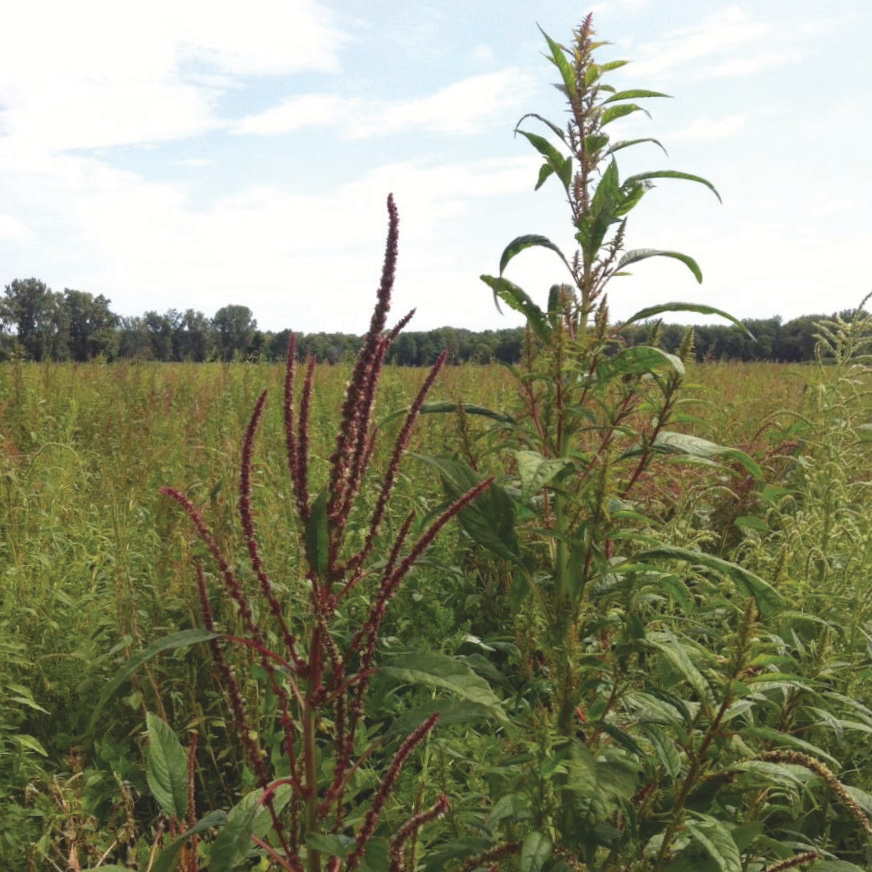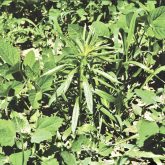In last month’s #PestPatrol, we discussed options for the control of glyphosate-resistant waterhemp. However, across the province, there appears to be a more immediate threat for the 2020 season from glyphosate-resistant Canada fleabane. This article will focus on management strategies to control both species at the same time.
It is true that glyphosate-resistant Canada fleabane has been discussed for many years, and some parts of the province have been affected more than others. Understandably, some readers might be thinking “You talk about this weed every year, and every year goes by and it has not shown up on my farm.” Although the species had been detected in as many as 30 counties, its distribution in a number of those counties in past years was limited to a handful of fields.
However, this fall it was very easy to find soybean fields with only Canada fleabane remaining in full flower and at quite a range in population densities (Figures 1, 2 and 3 below). In a growing number of fields, the population density of this weed is shifting from being an annoyance to yield-reducing. If you are seeing Canada fleabane populations in your fields that are similar to the photos shown here, then it needs to be a consideration in your herbicide planning for 2020.



Fortunately, some of the same strategies that can be used to control glyphosate-resistant Canada fleabane are also effective on glyphosate-resistant waterhemp (Figure 4 at top of page). Be forewarned, though. With this species, once it is large enough to accurately identify it is too large to be adequately controlled.
If you think you have either of these species and wish to get them identified and tested for herbicide resistance, call 1-877-424-1300 for contact information on the appropriate testing laboratory.
Have a question you want answered? Hashtag #PestPatrol on Twitter to @cowbrough or email Mike at [email protected].
















